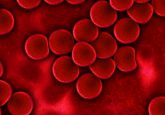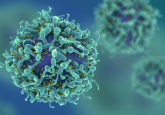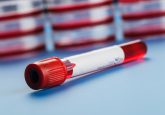Is sweat analysis the way forward?
A recent study published in the journal Science Translational Medicine has demonstrated the potential health monitoring capabilities of a new device developed by researchers at Northwestern University (IL, USA). This device is the first of its kind in that it can capture, sense, store and colorimetrically measure sweat, providing its user with an on-the-spot health monitoring service.
So far, individuals have relied heavily on blood samples for health monitoring. Now by, using a simple, inexpensive device, it may be possible to automatically monitor health through the analysis of key biomarkers in our sweat.
Designed for single useonly, the softness and flexibility of this newly developed device allows it to be placed directly on the skin on either the forearm or the back and used for up to a few hours.
This device chemically analyzes our sweat and quantifies the biomarkers present. This wireless quantification will hopefully allow users to quickly determine their exact physiological needs based on the levels of these biomarkers.
Leader of this multi-institution research team, and director of Northwestern’s Center for Bio-Integrated Electronics, John A. Rogers, comments on these findings: “The intimate skin interface created by this wearable, skin-like microfluidic system enables new measurement capabilities not possible with the kinds of absorbent pads and sponges currently used in sweat collection.”
The device was tested on two groups of individuals undergoing exercise. One group was set in controlled conditions, whereby individuals cycled indoors, whilst the other group participated in an outdoor long-distance cycling race – the El Tour de Tucson.
As designed, the sweat produced by these individuals during exercise was channelled into four separate compartments in the device, and the results of the chemical analysis were recorded in this study published in November.
Glucose, chloride and lactate concentrations along with pH levels are each measured separately in one of these compartments after each reacting with chemical reagents in the device.
Rogers explains the uses of this device further: “We chose these four biomarkers because they provide a characteristic profile that’s relevant for health status determination. The device also can determine sweat rate and loss, and it can store samples for subsequent laboratory analysis, if necessary.”
Users may be able to use their smartphones to connect to the device and read any changes in their sweat biomarker levels in real-time.
The device also displayed excellent durability when tested on the athletes participating in the outdoors long-distance race, showing no signs of leaking or loosening on the skin.
Due to its demonstrated ability to identify key biomarkers indicative of cystic fibrosis, it has also been suggested that this device may also be a future broader means of disease diagnosis.
Through these findings, this device has demonstrated potential in a wide range of settings. Further research is needed in order to fully understand these capabilities, and to fully unlock the potential of this device for our health.
Sources: Koh A, Kang D, Xue Y et al. A soft, wearable microfluidic device for the capture, storage, and colorimetric sensing of sweat. Sci. Transl. Med. 8, 336 (2016); https://news.northwestern.edu/stories/2016/11/researchers-develop-soft-microfluidic-lab-on-the-skin-for-sweat-analysis/






